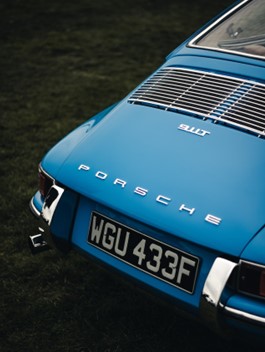
Taking a neglected classic car and restoring it to its historic beauty is a highly rewarding hobby–both personally and financially. It is, however, also quite demanding of one’s time and effort. Thankfully, there are several popular ways hobbyists practice their craft.
The three biggest ways to restore a classic car include stock, “restomodding”, and hot rodding. There is some overlap in the methods involved but the driving philosophies behind each style are vastly different.
The classic car restoration hobby has a deep history that reflects its hobbyists’ passion. Below, John Myungjune Kim UCLA provides a breakdown of the most popular styles and methods of restoration today.
Traditional Restoration, “Restomodding” or Hot Rodding
The first of these styles is the traditional restoration. Hobbyists that practice this style do their best to restore the vehicle to the original parts and specifications. This requires the restorer to search for replacement parts from the car’s manufacturing era.
The goal is simply to restore the vehicle with no alterations. It combines a love for history with a love for automobiles. Unfortunately, exact replacements can be difficult to come across depending on the vehicle in question.
This leads to the second main restoration style dubbed “restomodding.” This style involves taking a classic car and upgrading it to today’s technology. Restomodding can take the form of upgraded engines, seats, safety features, and electronics.
Typically, restomodding does not include overt visual changes. The vehicle should still be recognizeable as a classic.
Lastly, there is hot rodding. This style is similar to restomodding in that it is not restricted to era-specific parts. The difference is in the purpose. Hot rodding is generally about looking great and going fast. This can mean large sweeping changes to both the appearance and capabilities.
That said, hot rodding can look different from hobbyist to hobbyist.
Popularity of Restoration Styles
Classic car restoration as a whole was projected to grow between 2020 and 2024 and has generally done so. Lockdown in particular saw an increase in classic car purchases and projects.
In recent years, restomods have been a hot trend. More and more hobbyists have been updating classic cars with modern parts. This restoration style may be more prominent for a couple reasons.
Some hobbyists feel that the true classics have been restored traditionally so many times that another restoration is not as desirable. Then there is the question of parts. As the years pass it becomes harder and harder to get those correct parts.
Another possible reason is the continuously growing gap in performance between classic machines and modern.

General Restoration Methods
No matter the style of restoration a hobbyist is following, many of the basics of restoration are similar.
A hobbyist must evaluate the condition, repair imperfections, fix or upgrade the moving parts, check electrical systems, fix internal parts, and refresh the paint job.
Final Thoughts
There is a lot of work that goes into restoring a classic car. When completed, the vehicle becomes a testament to the individual’s passion for automotive history. These projects create works of art.